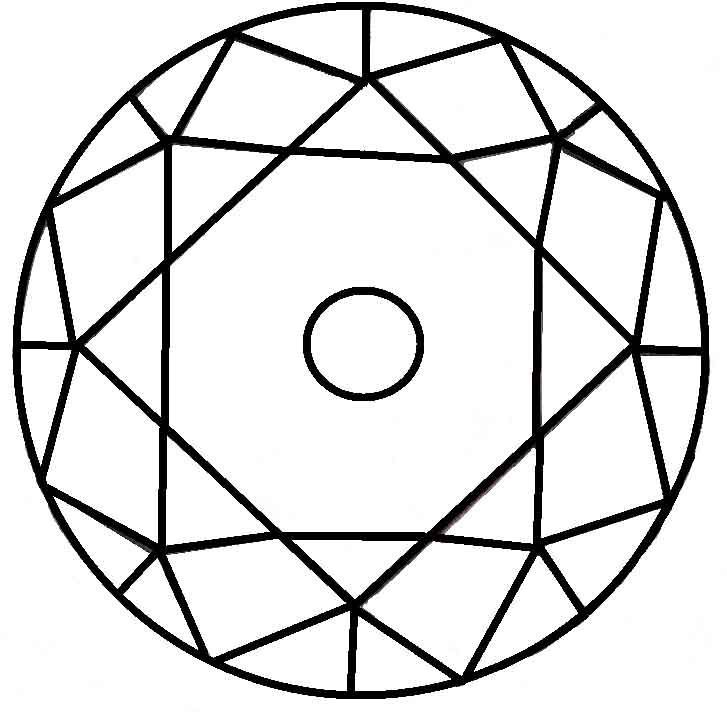You may never have heard of a culet [pronounced kew-let], but believe it or not it is a part of every diamond. Knowing about culets can be very helpful, as it could potentially have an impact on your decision when it comes to buying diamond jewellery.
Diamond Anatomy

Diamond Culets
Culets come in a variety of sizes, as graded by the GIA [Gemmological Institute of America]. The grading scale is as follows:
- None
- Very Small
- Small
- Medium
- Large
- Very Large
When a culet is graded as ‘none’, then the base of the diamond goes down into a sharp point, whereas when the culet is large enough, it is considered as another facet in itself. A brilliant cut diamond, for example, has 57 facets without a culet, and 58 facets with a culet.
The larger a culet is graded, the more visible it is when the diamond is viewed through the table of the stone. While this may not sound like an issue, the visible culet marks can easily be mistaken for flaws in the diamond.






Obviously, nobody wants their diamond to appear flawed, and so it’s important to consider the culet grading when choosing a diamond ring. A grading of ‘none’, however, has its downsides also. Having no culet makes a diamond more unstable, as it is difficult to set securely with a sharp point at its base. Furthermore, the culet is the most vulnerable part of a diamond and a ‘none’ culet is susceptible to damages such as cracking. If the culet cracks, the base of the diamond could crack also, leading to visible black, white, or sometimes cloudy marks in the diamond, and this could significantly lower the stone’s value.
Are Culets Good or Bad?
While culets can appear as flaws in a diamond when they are too large, the risk of actually damaging the stone is too high when they aren’t included at all, so ideally your diamond should have a culet. Ones that are graded as ‘small’ or ‘very small’ are the best ones, as they are the least intrusive on the appearance of the stone. Culet cuts are too small to affect a diamond’s carat weight, even when graded as ‘very large’, so there’s no negative aspect to them there.
Culets are an essential to a secure diamond, and – if cut in small enough – they do not ruin the appearance of the stone. Having a ‘none’ culet endangers your jewellery, making it more likely to be damaged, possibly beyond repair. Therefore, it could not be more crucial to have a culet in your diamonds.
Does My Diamond Have a Culet?
New diamonds will likely feature ‘very small’ culets, as they are specifically designed to be as stable as possible within the item. Older diamonds, cut by hand rather than machine, will tend to have larger culets, as the precision is harder to achieve than it is with the technology available to jewellers today. So, if the item you have is newer, then it is quite likely to have a ‘small’ or ‘very small’ culet, possibly even invisible to the naked eye when viewing the diamond from the top.
Finding out if your diamond has a culet may in fact be impossible, depending on how the diamond is set. Most diamonds with a culet that grades as ‘none’ will be set in a way that hides and protects the point of the diamond, so if you can see the base of your diamond, you should be able to see that it does have a culet.
Diamond culets may be something you’d never given thought to before, but now that you’ve learned about them, hopefully you can utilise this information and consider the culet the next time you’re looking to buy new diamond jewellery.





